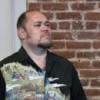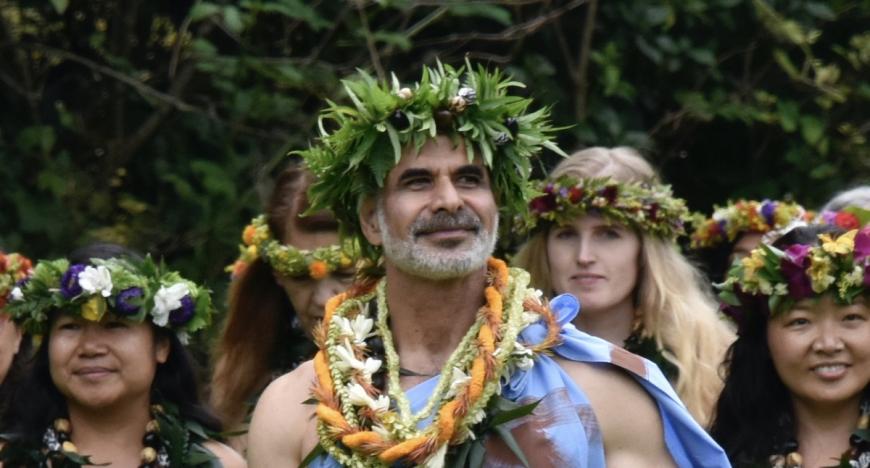
Patrick Makuakāne is the founder and artistic director of the Hawaiian dance company, Nā Lei Hulu I Ka Wēkiu (“the many feathered wreaths at the summit, held in high esteem”). He recently joined with Saddle Road Productions to form the group Eō. In April, they released their first single, Hānau, about the birth of the Hawaiian Islands, from the album of the same name, which comes out later this year.
Makuakāne, who has received several Isadora Duncan Dance Awards as well as a lifetime achievement award from the San Francisco Ethnic Dance Festival, is known for combining disparate elements in hula — he has included opera, drag queens, and electronic music in his shows — as well as one telling the story of the colonization of Hawaii. His annual shows sell out the Palace of Fine Arts, and he’s performed on the streets of New York City and San Francisco, Burning Man, and San Quentin Prison.
In a video interview, Makuakāne talked about how he joined up with Patrick and Scarlet Eskildse from Saddle Road Productions (when they did some traditional Hawaii music in the style of lindy hop), making his first album, marrying disparate things to create dialogue, some dances being like precious family heirlooms that should be left alone, and the best compliment he ever got about his work.
The first single off the album is about the birth of the Hawaiian Islands. Why is this a story you want to tell?
It comes from an old chant that speaks about the birth of the Hawaiian Islands — and there are several about how the islands are born — but this is a sprawling, epic chant, and the fullest version I know of. It’s set to music I find compelling and mysterious. I usually don’t pair these two together, and I really enjoy dichotomy as a lens to open up perspective, and it’s very me.
Why did you decide to make this album now?
I’ve been making music for a while in terms of my work as a choreographer, but it’s the first time I’m solidifying that into an album. I have an unusual aesthetic when it comes to expressing hula because it’s not only traditional which means chanting and percussive and a little bit more contemporary but still in the Hawaiian instrumental vein with ukulele, guitar, bass, and those kind of sounds with Hawaiian chanting. I also love electronic music, alternative music, pop music, and opera — basically everything.
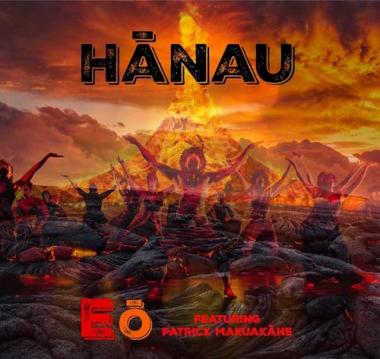
I think hula is one of the beautiful expressive forms of dance out there, so why limit it to Hawaiian music? That means I would have to search for the kind of music I want, manipulate it and manifest it into something workable for me. So what I love about these musicians who came up to me and asked me if we could collaborate and create something together, they have the musicianship and the skills and they also have musician friends! OK, we need a sax player, a tuba player, a trombone player for one of your pieces, a steel guitar player — we got it.
So it’s like this really awesome marriage. Did you ever see that [Blind Melon] video with the little girl dressed as a bumblebee, and people are looking at her like she’s a weirdo, and then she goes to the countryside and opens these gates, and she sees other people are dressed as bumblebees? It’s like, “Oh, my God, my people!” It’s so adorable. I found sort of my people because they appreciate this different kind of aesthetic in music, they know how to create it, and so we collaborate and come up with something that’s my musical hula choreography aesthetic and turn it into music that hopefully other people will like. It’s very different from rest of Hawaiian scene out there. But we have a really loyal following of people who come to see our shows, and I’ve been training them for decades. [Laughs.] We’re not for everybody that’s for sure.
They play with a band that is totally Hawaiian jazz. We collaborated on a piece of lindy hop — we did four songs for a show we did called Hula in Unusual Places. I brought them over, and they saw the other things I’m involved with and they loved what they saw and so that’s how the collaboration began. It’s truly a collaboration with both entities working together to create something that’s different and hopefully beautiful that people will respond to.
You’re described as a boundary pusher who is rooted in tradition. Why do you want to push the boundaries?
I like marrying incompatible things together, and that helps to open up a dialogue. Early on in my career, I was described as an artist who likes to turn tradition on its head, but I totally prefer my tradition right side up. [Laughs]. I don’t think you have to turn tradition on its head to innovate and evolve. They can live side by side, and both can thrive. I’m not getting rid of this — I still have all of this. For people who like their hula unfettered by political and social commentary, I got stuff for you too! [Laughs]. If you like straight-up beautiful Hawaiian singing and Hawaiian acoustic instruments, we do that. But if you like that, maybe you’ll like this too.
What’s fun about that?
I’m able to take disparate things from my life that I really love like hula and Hawaiian music and chanting, and I love also electronic music.
I used to be a DJ, a legend in my own mind, many years ago. As a friend of mine says, “Two parties on Fire Island does not make you a DJ,” but it does! Fuck off! Bringing these two things together, seemingly so different and somehow making them work has been really fulfilling, especially when you see people not just like it, but they kind of go cuckoo bananas over it. That inspires me, and I’ve been doing this such a long time I feel like there are no limits. Every crazy thing I’ve wanted to do I’ve done, and there are more crazy things on the horizon. One of the reasons I can do that is because I live here in San Francisco. In Hawaii, I wouldn’t have had the support without people looking over your shoulders and criticizing every move. Here you get to explore, and the dance field here is stretching the boundaries of what dance is. It’s dance plus art plus social justice and it’s healthy and necessary.
It’s the same thing as hula because, what was hula? It was the receptacle of the environment. What was going on in the world came out in your dance. I feel like I’m doing the same thing my ancestors did except I’m here two centuries later in San Francisco.
At the same time I’m doing all this stuff here, I went back home in 2000 for three years and I did a master’s program in traditional hula, so I have that anchor and I loved it. I love those little gems. They’re like family heirlooms — you’re very careful when you bring them out to show them to people. They’re very precious and you understand they don’t need to be changed and their inherent value is just the way they are. But there are so many things out here that you can innovate with, and there’s a place and time for that. I’m given all these beautiful chants and dances that I will never change and when I teach them on to my students, I say “don’t touch these, pass them as I pass them on to you, as it was passed on to my teacher,” and so forth. This can be experimented with, and this can be enjoyed as is.
You’ve brought your work to a lot of different places, including the streets of San Francisco and New York City, San Quentin Prison, and the Burning Man festival. How did those come about?
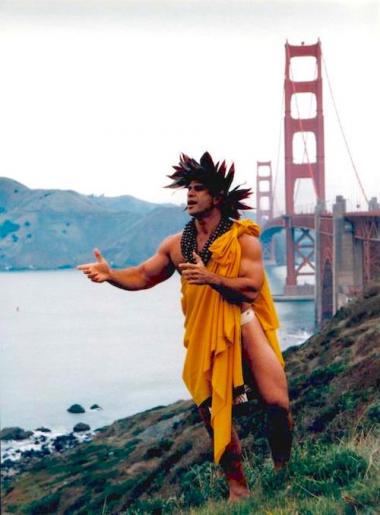
A friend had been trying to get me to go for years to Burning Man. I didn’t want to go there with all those hippies doing drugs, but finally I went there, and I was like “holy fucking fuck, what is this?” The art blows your mind, it’s phenomenal, and that’s just one segment. It’s the community and the relationships and how the art is not only what you’re witnessing with these incredible installations, but the way you react for small moments. It’s unlike anything else I’ve experienced. And it’s the perfect place for my work — they get it on a level nobody else has. It’s strange how people respond to it — they’re viscerally and emotionally moved, and who doesn’t want to have that kind of love — oh, my God.
The first year I went, I was like, I’m bringing my dance troupe because I noticed they didn’t have any professional dancing. At first I brought 10 people, and the next year, I brought all 30 of us and 10 crew members. It was the hardest thing, beyond what you could have possibly imagined with that heat and you can’t use the bathroom and you can’t drink water. It was exceedingly difficult, yet the magic we were able to witness and [that] transpired was so mind-blowingly enriching. I would never do it again, not the entire troupe. I will go to Burning Man every year now to the end of my days because as an artist it inspires and fulfills me.
In the streets we did a thing many years ago called “hit-and-run hula,” where we’d get into a bus, drive to different places in San Francisco, run out of the bus, and I’d have an ukulele or a portable sound system, and [we’d] attack unwitting people at a café or a park and do a hula and run back onto the bus. It was incredibly silly chaos that was so much fun. We’ve done that in New York and San Francisco and on a plane to Hawaii.
With San Quentin, I started teaching there about four years ago as a favor for a friend with a group called The Native Hawaiian Religious Spiritual group. The word religious is key because there’s an act that says you have to allow people [in prison] to worship. What I do is not hula, it’s called service. And I luxuriate in that irony. [Laughs.] I am a spiritual advisor, and I conduct a service. But really what I do is I teach culture and hula, and to see how that has an effect on the men is one of the most fulfilling things I’ve done in my life in terms of teaching. I love teaching and I love my students. They’re lovely gracious people. But when you go in and teach these guys who have nothing and they’re treated like scumbags and you see they develop an understanding of discipline and respect and, most importantly, community, and they use that brotherhood and community to sustain themselves in that really disturbing environment. And that they can move past that toxic masculinity that always needs to be on display at prison otherwise you are just run over.
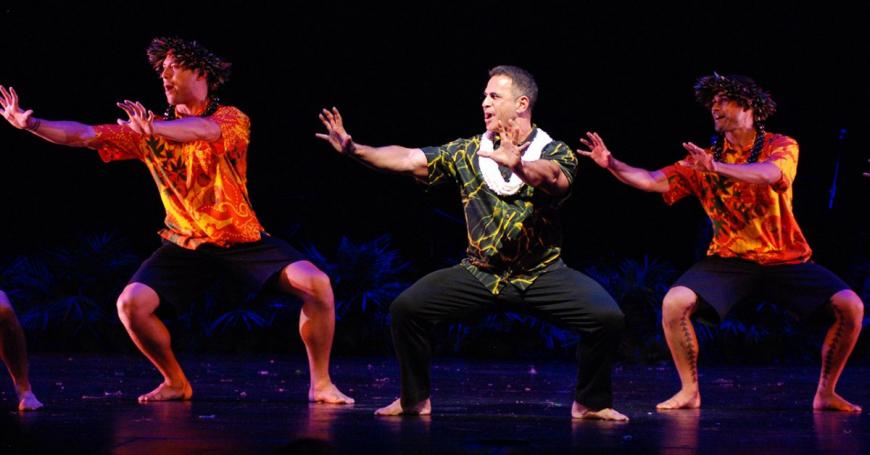
There is a big Pacific Islander community here. How do they respond to your work? Do they want you to do strictly traditional work?
I’ve been here 35 years doing this and now the question is moot. People are accustomed. In 1996, I first did this missionary piece, and I remounted it 20 years later for the anniversary. That piece was such an incautious, messy, incoherent, splendid, courageous piece. I just threw everything at the wall and told a story about something I had so much contempt for — the Christianization and colonization of Hawaii — with elements that I love: hula and progressive dance music. I combined them together and did this crazy piece, carrying a cross and having dancers follow me in fanatical worship. I first started it with topless dancers which was never done in Hawaii. It was a lovable, awesome, incoherent mess.
I never did any research and my ignorance and anger — because at the same time it was the whole AIDS crisis. I was sort of living a backlash for the Catholic church, and I’m Catholic, I went to a Catholic school, and the way they totally ignored the AIDS epidemic and the families not wanting to deal with their sons who were gay and had AIDS. My partner at the time was with the Shanti Project, a group that was taking care of these men who were very sick. It was an awful, horrible time in our life. Yet the gay community rallied around and took such care of their community with love and empathy.
I felt there was a parallel with the government and the Catholic Church’s refusal to do anything, and what happened to the Hawaiian people a century and a half ago with the government and Christianity, so this work was basically fueled by anger and passion. I was able to sort of correct that 20 years later by doing an incredible amount of research. But then the anger and passion and ignorance allowed me to do whatever I wanted. I wasn’t scared what people would say. I could never have done that in Hawaii. I remember moving here and going to Nordstrom when it first opened, and that big circular escalator and all these men throwing placards and fliers in the air and yelling, “We’re here, we’re queer, we’re not going shopping,” and I was looking around like, “What is this, they’re all going to leave, and nobody gets arrested?” I thought, “I want to live here and do stuff like that with my work.” [Laughs].
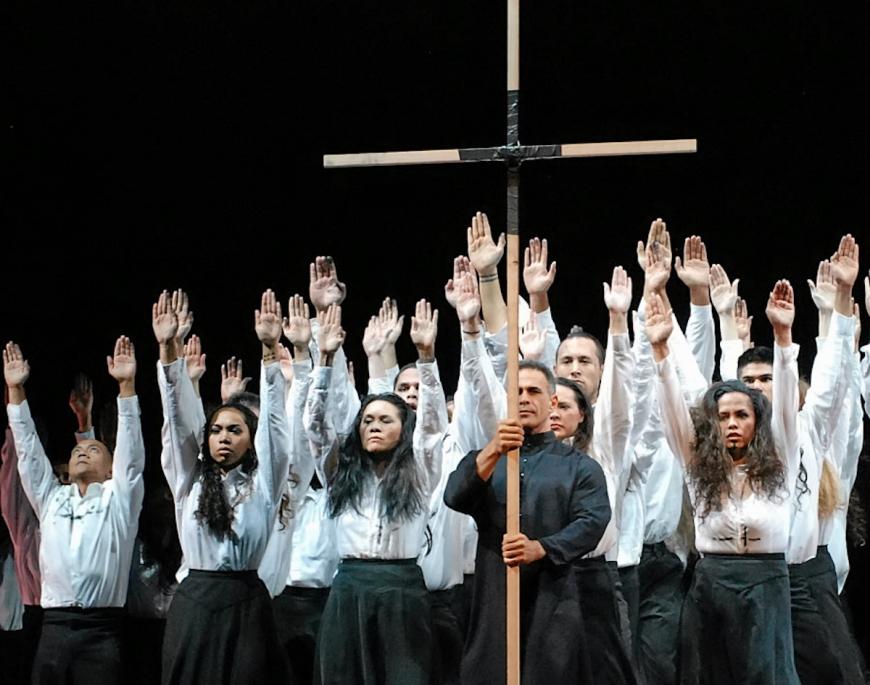
So I thought that show, The Natives Are Restless, was just going to be one show and people were going to walk out, and I didn’t care. But people loved it. The response was overwhelming. I’m not sure if it was the rawness and the truth behind it. It was the first time you could go see a hula production which wasn’t about lovely flowers and the beautiful hula girls and grass skirts, but it told an ugly truth about our history. What that did was it sent me on a trajectory that I’m still living with. It taught me as an artist you can be provocative, you can be thoughtful, and that could inspire change. Now of course I’ve had people who are like, “Oh my god, that’s crazy.” I go back to Hawaii every few years to show my work, and if everybody hated it, I would seriously question it. But they love it over there too.
There is a guy, Kamuela Enos, who is with the Office of Indigenous Innovation at the University of Hawai’i. He is just such a smart, amazing young man, and I’m incredibly inspired by the work he does to promote agency for young Hawaiians. He said he was 20 years old when he saw our show and he described what it taught him, how innovation and storytelling rather than protest and banging people over the head with a fist and a sign is more compelling to affect change, and that sent him on a trajectory to do his work. I was like, “that’s the best thing I’ve ever heard in terms of a compliment.”


